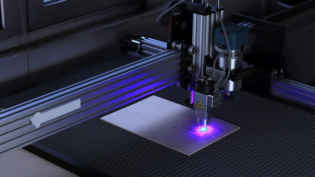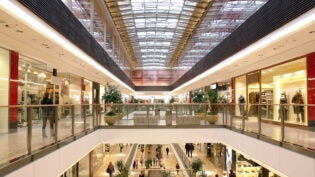
The volume of construction output worldwide is projected to grow by 85 percent by 2030. This puts the global construction industry in a challenging position: It will have to meet increasing demand even as the world faces mounting resource constraints and demand grows for high-performance (even “net zero”) buildings.
For innovative firms equipped with BIM workflows and prepared to take full advantage of green construction technology, this challenge can become the opportunity of the century. There are five current and emerging tech trends reshaping the industry for the better and helping to future-proof the built environment.
1. Industrialized Construction
Prefab, offsite, and modular construction are on the rise, with BIM helping to catalyze the trend. That’s good news, benefiting both stakeholders and the environment. When construction moves offsite, material can be managed with extreme efficiency, reducing costs and driving down a building’s final embodied carbon. Stock can be ordered to spec, cut and assembled with precision, keeping tolerances tight. Tighter tolerances, in turn, make buildings more energy efficient. Precutting material and assembling building components in a controlled, factory-like setting allows for a more streamlined build process and minimizes site disturbance. This approach also reduces waste from overage and scrap and even boosts operational performance.
Construction stakeholders benefit from increased worker safety in a controlled offsite environment, but the advantages don’t stop there. Contractors can also reduce variability and tighten their delivery timeline by decoupling construction of the modular assembly from onsite schedule. Modular buildings have been shown to perform better than their site-built counterparts, saving owner-operators on their energy bills and cutting emissions during occupancy.
BIM will help construction companies reclaim scrap waste, leading to reduced costs and a lighter environmental footprint.
2. Circular Construction
Demolition contractors regularly quote for the recovery of building materials in their bids. But BIM can do much more to ensure buildings and tenant improvements have a cost-effective, environmentally sound end of life. Huge quantities of construction and demolition waste still find their way to landfill each year as incoherent scrap. This continuous flow of waste represents lost value and a missed opportunity to cut carbon emissions: Recycling materials, such as steel, produces a fraction of the greenhouse gas—and is typically less expensive—compared to the production of virgin materials.
BIM paves the way for a more “circular” model, where materials stay in play for longer, getting reused or at least recycled whenever possible and helping to mitigate the resource crunch. And in some regions, especially Europe, the industry is increasingly treating “buildings as material banks.” BIM’s ability to generate highly accurate bills of materials (BOM) supports the creation of “material passports,” helping developers, owners, and tenants know and track precisely what goes into a new building or tenant improvement to support easy recovery down the road. Design for disassembly and reversible construction techniques ensure that what gets built can come apart again with minimum effort. BIM helps rationalize, plan for, and guide material reclamation, lowering the amount of time and cost required to do so. Some large firms, like Royal BAM, are already going so far as to simulate building disassembly, taking, one could say, a virtual design and construction (VDC) approach to decommissioning—a trend likely to spread in coming years.
3. BIM-Enabled, Superoptimized Planning and Scheduling
BIM ushered VDC into the world, making it much easier to plan, simulate, and visualize builds in advance. Four- and five-dimensional construction, increasingly common, now help streamline onsite work, making it leaner. These practices effectively reduce a building’s embodied carbon: minimizing the energy and material stock going into it and cutting the waste coming out of it. Projects taking full advantage of this trend are achieving unprecedented reductions in cost, logistics, and timelines while boosting margins by turning construction into a tightly choreographed number with a slimmer environmental footprint.
Meanwhile, BIM technology is getting smarter. At a day-to-day level on the job site, machine learning is already helping contractors prioritize tasks and manage risk. As time goes by, construction software will start to intelligently suggest better alternatives early on in the planning process. It could eventually start to autogenerate entire end-to-end lean, green construction work plans based on BIM.
4. Quantifying Environmental Cost Savings
Green building enhances property value, but it can be tricky to know how well a project is actually doing or even to choose the right benchmark for comparison. And as the global response to climate change ramps up, high-impact sectors such as construction are going to be increasingly accountable for their environmental impacts. Quantifying energy and material savings can be a daunting task–translating these factors into carbon emissions averted even more so. But getting at these numbers is essential to informed decision making and, increasingly, for compliance with regulatory standards.
In the future, expect to see BIM tools surfacing actionable environmental impact data at key moments during planning and execution. Technology will help contractors rationalize greener construction in the bidding process, empowering them to clearly communicate the environmental and financial logic of their decisions in tandem. Eventually, machine learning and AI will automatically serve up the optimal choices, providing recommendations for cost, material, carbon, and even water savings.
5. Energy Analysis to Inform Delivery Spec
Energy-analysis tools already allow building designers to cost-effectively maximize built energy performance. But energy efficiency isn’t just the concern of architects or MEP engineers. Contractors, too, can leverage energy analysis during value engineering, starting by identifying the most sensitive and least sensitive factors contributing to a given building’s energy consumption. For some projects, glazing type could be a high-impact choice, to be treated as “sacred” if the building is meant to perform as designed. For others, it could be wall-construction spec. This approach allows contractors to shave costs as required only where changes to design spec have the lowest effect on built performance. It quantifies and minimizes the “compromise” to the as-designed energy performance.
It can also help manage tradeoffs, accounting for more expensive line items in first cost. For example, more expensive glazing could reduce cooling loads, allowing for a smaller, less expensive chiller. This example is actually better than cost-neutral because it pays dividends over the course of the building’s occupancy, cutting operational energy costs and carbon emissions.
Article by Michael Floyd. A version of this article appeared previously at Construction Executive.














